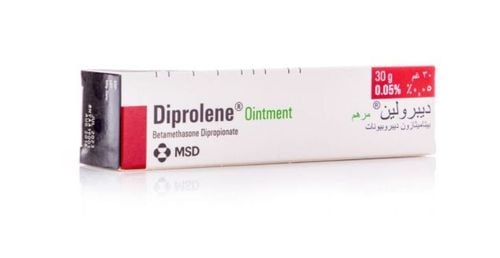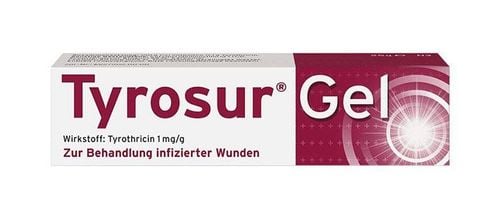This is an automatically translated article.
Articles written by Master. Doctor Tran Quynh Trang - Doctor of Biochemistry - Laboratory Department - Vinmec Times City International Hospital
IgE (Immunoglobulin E) is one of five types of immunoglobulins (IgM, IgG, IgD, IgA, and IgE). It is the end product of the immunoglobulin family to be discovered. IgE not only has a unique chemical structure, but also has many important physiological functions such as type I hypersensitivity reactions, parasitic infections, autoimmune processes, and is indispensable in the pathogenesis of these disorders. allergy.
1. What is IgE?
Immunoglobulin E (IgE) are antibodies produced by the immune system. They are mainly secreted by the mucous membranes of the respiratory and digestive tracts.
They have fixed properties on plasma cells and basophils and are cells capable of releasing chemical mediators that cause vasodilation such as: Histamine, serotonin and some other substances such as, tryptase, prostaglandins , leucotrienes and eosinophils. It participates in immediate hypersensitivity type reactions (allergic reactions).
All immunoglobulin molecules have a common structural framework characterized by two identical small polypeptide chains (light chains) and two identical large polypeptide chains (heavy chains). Immune IgE plays a major role in allergic reactions and allergic disorders such as: allergic rhinitis, asthma and atopic dermatitis.
If you have allergies, your immune system overreacts to the allergen by producing antibodies called Immunoglobulin E. These antibodies travel to cells releasing chemicals, causing produce an allergic reaction. This reaction usually causes symptoms in the nose, lungs, throat, or on the skin.
These disorders manifest as type I hypersensitivity reactions, involving IgE and other immune cells, eventually causing clinical symptoms. Originating with initial exposure to an antigen or allergen, received and processed by dendritic cells or macrophages, which introduce the antigen into T cells. In the presence of the mediator cytokines IL-4 and IL-13, induced T cells, differentiate into TH2 helper T cells that are able to present antigens to B cells. The B cells then undergo events recombinant, the final conversion produces the Immunoglobulin E antibody, which is able to bind to the antigen presented at the "antigen binding site" of the Fab portion of the antibody. When the initial response to the antigen occurs, multiple immune responses can take place, ensuring a stronger IgE response.

Each type of Immunoglobulin E has a specific "radar" for each type of allergen. That's why some people are only allergic to cat dander (they only have IgE antibodies specific to cat dander); while others have allergic reactions to more than one allergen because they have more types of IgE antibodies.
Immunoglobulin E also plays an important role in protecting the body against parasitic diseases, especially those caused by worms and some protozoa.
2. Some manifestations of an allergic condition
Symptoms can occur in many different areas of the body. Depending on the route of entry and the allergen, there are different symptoms.
If the agent comes in contact through the upper respiratory tract, it can cause symptoms such as: Sneezing, itchy nose, red and itchy eyes, allergic conjunctivitis, swelling of the nasal mucosa, runny nose, cough and other symptoms. other evidence. For people with asthma can lead to airway smooth muscle spasm, skin edema, urticaria.
Ingestion exposure can cause: Abdominal pain, flatulence, diarrhea, vomiting, skin rash, urticaria, rhinitis or asthma, swelling of the lips and tongue, numbness.
Allergies due to insect bites can appear as: Swelling, itching, skin discoloration in the bitten area, the body appears itchy rashes, more severe can cause coughing, ie. chest, more serious can cause anaphylaxis.
Allergies due to drug use can cause symptoms such as: Abdominal pain, cough, sneezing, chest tightness, difficulty breathing, rash, hives, more severe can lead to anaphylaxis.
3. IgE test quantifies total IgE in blood
The test is used to screen for and detect allergic diseases. An increased level of IgE indicates a possible allergic process but does not indicate to which agent the allergy is specific. However, a normal IgE value does not mean that an allergic disease can be ruled out. Reference values for IgE by age, these values may vary from laboratory to laboratory.
Quantitative IgE testing is ordered when a person has signs or symptoms suggestive of an allergy to one or more substances. These symptoms may manifest on the skin, respiratory tract or gastrointestinal tract, such as:
Periodic or persistent itching Rash Itchy eyes Eczema Nausea, vomiting, persistent diarrhea Runny nose, cough, congestion Shortness of breath Have asthma symptoms: wheezing, shortness of breath, cough, chest tightness

When registering for the package of examination and consultation for treatment of atopic dermatitis, customers will receive:
Dermatological examination (without appointment) Perform tests such as: Quantitative IgE, fresh mycobacteria, specific IgE levels for respiratory and food allergens (Panel 1 Viet), Rida Allergy Screen test (panel 1). Vinmec International General Hospital is one of the hospitals that not only ensures professional quality with a team of leading doctors, modern equipment and technology, but also stands out for its examination and consulting services. and comprehensive, professional medical treatment; civilized, polite, safe and sterile medical examination and treatment space. Customers when choosing to perform tests and treat diseases here can be completely assured of the accuracy and high efficiency in the treatment process.
Please dial HOTLINE for more information or register for an appointment HERE. Download MyVinmec app to make appointments faster and to manage your bookings easily.
SEE MORESpecific IgE 53 respiratory allergens – food IgE quantification in the diagnosis of atopic dermatitis Allergic diagnostic tests














